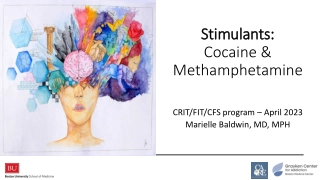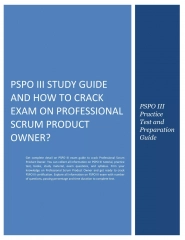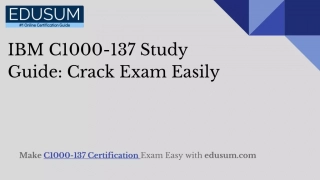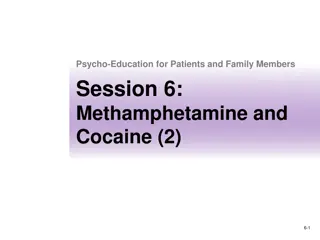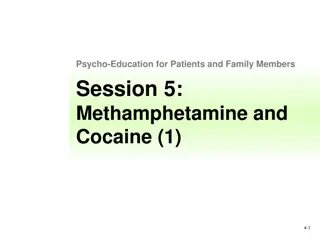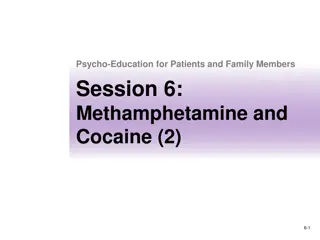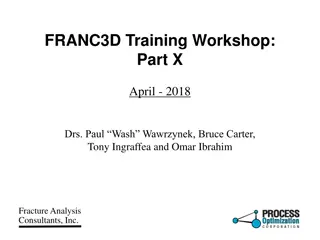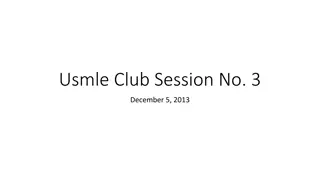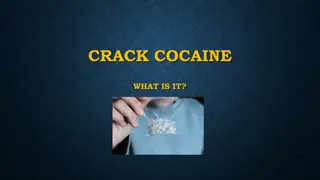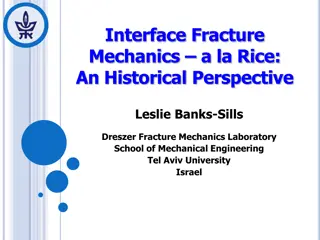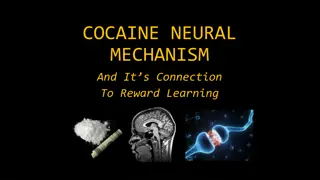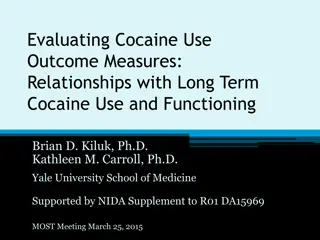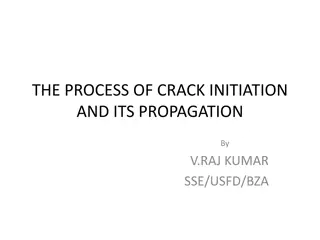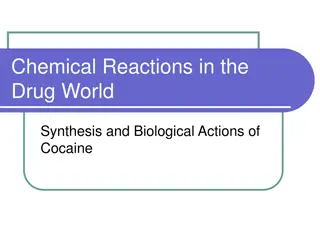Crack Cocaine: A Local Perspective - TDATF Review & Strategic Goals
Background on JADD and CARP's efforts funded by TDATF to address crack cocaine issues, strategic goals for 2021, European & national prevalence data, client contacts, and usage patterns. The report highlights the prevalence of crack cocaine use, harm reduction services provided, and trends in pipe distribution.
Download Presentation

Please find below an Image/Link to download the presentation.
The content on the website is provided AS IS for your information and personal use only. It may not be sold, licensed, or shared on other websites without obtaining consent from the author. Download presentation by click this link. If you encounter any issues during the download, it is possible that the publisher has removed the file from their server.
E N D
Presentation Transcript
Crack Cocaine A Local Perspective TDATF Shane Hamilton Coordinator JADD
Background JADD and CARP have been funded through the Tallaght Drug & Alcohol Task Force (TDATF) since 2018 to provide supports to individuals reporting crack cocaine as a problematic behaviour. The following is a brief review of JADD s and CARP s crack cocaine response and prevalence data in Q1 2021.
JADDs Strategic Goals 2021 Strategic Theme: Low Threshold 1. To provide people who use drugs with information about the risks associated with drug use and means to minimize such risks. 2. Develop gender specific interventions based on the needs of polydrug users. 3. Increased effective partnerships with relevant agencies, including housing, domestic violence, mental health services, etc. 4. To continuously develop new and effective interventions to support service users using crack cocaine. 5. To continue to target the most vulnerable and high-risk service users for early interventions.
European & National Prevalence Data The EMCDDA (2018) reported Ireland in the top four countries across Europe for cocaine use among young adults. They also noted that availability and purity of cocaine was increasing. NDTRS data, complied by the Health Research Board, (2020) found that cocaine was the second most reported drug used in 2019, an increase on previous years. Regarding crack cocaine specifically, it was reported that crack cocaine accounted for 14.3% of all cases treated, compared to 11.3% in 2018 (HRB, 2020). In relation to crack cocaine users in Ireland, there is a higher lifetime prevalence rate (35.6%) for high-risk populations, such as sex workers, the homeless, and prisoners (Bates, 2017).
Prevalence Data @ JADD & Client Contacts Q1: 299 individuals presented to JADD s harm reduction service in relation to their crack cocaine use. 100 90 80 70 60 50 40 30 20 10 0 Daily Contact X1 per week X2 per week X1 per month
Daily users: 6-10 rocks per day Average use (crack cocaine rocks) X2 per week: 3-4 rocks per day X1 per week: 1-3 rocks per week
Crack cocaine pipes administered From CARP from June 2018 to April 2021 600 564 500 389 400 300 278 200 157 100 0 2018 2019 2020 2021
Demographic Information Male: 182 Female: 117 Age Profile: 18-25=4 25-30=59 30-40=126 40-50=67 50+=43
Complex Needs Child protection issues Experiences of homelessness Criminal justice issues Tenancy issues Histories of psychiatric illness
High Priority Areas Cottage Industry Killinarden area has identified anywhere between 15 and 25+ houses in that immediate area. Russell Square (6 crack houses) Mac Uilliam (5 crack houses) Kiltalown (3 crack houses) Ardmore (2 crack houses) Sundale (2 crack houses) Glenshane (3 crack house) Cloonmore (4 crack houses) Sringfield (3 crack houses) Tallaght Cross (2 crack houses) Swiftbrook (1 crack houses) Bawnlea (2 crack houses)
Types of Crack Houses Type 1 Type 2 Type 3 Type 4 Acquisition & use of crack. Generally smoked, no injecting. Purchase of crack only, no using, however, homeowner is a crack user. Close peer group use in the dwelling. Dealers prepare and bag crack in this type. Acquisition of crack, use on site, sex for crack exchange, injecting allowed, and generally more chaotic, with potential for violence. Use of crack only. Generally smoked, not injected.
Crack Cocaine & Methadone Treatment Of the 60 individuals in receipt of methadone treatment, 41 (68%) are accessing crack cocaine supports.
CARP Females Crack support programme This programme incorporates evidenced based approaches and non- judgemental engagement to support women where they are at in their life. 14 13 This programme includes: 12 Facilitated peer support group Drug education and prevention/harm reduction Access to professional drug workers/key working/addiction counselling/family therapy Access to hairdressing, nails and make up sessions Holistic sessions Support with referral to any services that are identified that will help the individuals Primary health care Lunch Access to shower Outreach engagement and one-to-one support Engaged through over the phone support. 10 9 8 8 6 4 2 0 2018 2019 2020 2021
Interventions Delivered Crack Pipes: 767 Group Programme: 9 women Case management support: 16. Referrals: 36 (methadone, residential treatment, and housing/homeless services)
Crack Cocaine Service User Feedback Behaviours: Group reported that the sharing of crack pipes, including home-made pipes, is common among peer group. Housing: Considerable number of tenancies under review by housing bodies. JADD, with the support of the Niamh, are currently working with SDCC around these issues. CARP s Intensive work with Family support service WASP and 14 of the 17 Families engaged report crack cocaine use in the family. Transactional sex: Group reported that women are engaging in sexual behaviours in return for crack cocaine. Health: Mental health and physical health are seriously affected.
Summary This brings me to the end of my presentation. In summary, I spoke about the following: 1. 2. 3. Increased prevalence in both JADD & CARP Service user profiles & crack cocaine use Increased demand on services 4. 5. Impact on service users Impact on communities
Considerations for TDATF Prevalence data: Significant increase in crack cocaine cases presenting to JADD & CARP. Placing additional & considerable demand on service provision. *Implications: Increased risk for JADD to manage challenging behaviours, etc. JADD recently conducted a risk assessment, with an increase in risk rating. High risk groups: Bates (2017) reported very high rates of injecting cocaine and sharing of injecting equipment. The majority of JADD s clients would meet Bates's criteria as high risk. *Implications: Substantial public health risks for the Tallaght area.
Considerations for TDATF Crack Cocaine Contacts: Significant proportion of crack cocaine users presenting to services X1 week/X1 month, for example. *Implications: Possibly using unsafe equipment (homemade pipes), higher risk of overdose, etc. *Implications: Deficit in knowledge & data regarding the true nature & extent of the issue in Tallaght, therefore, difficulties implementing an evidenced based response.
Considerations for the TDATF Displacing crack cocaine users: The high number of crack houses in the community is very concerning, as discussed, however, we should also be cognizant of the possible risks that will present as housing bodies and the Gardai respond to this issue. It is possible that we could see an increase in public use, discarding of equipment, etc., which may lead to public opposition to local addiction services.


